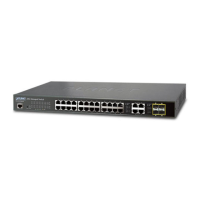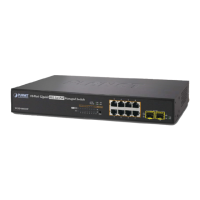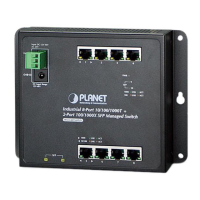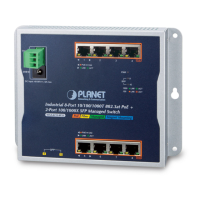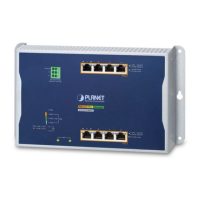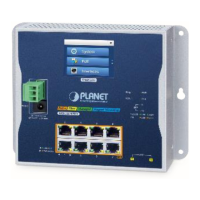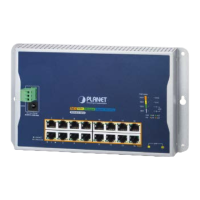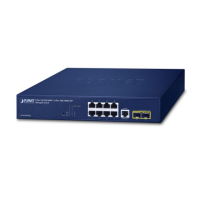parameters in the Switch are as follows:
Priority – A Priority for the switch can be set from 0 to 65535. 0 is equal to the highest Priority.
Hello Time – The Hello Time can be from 1 to 10 seconds. This is the interval between two
transmissions of BPDU packets sent by the Root Bridge to tell all other Switches that it is indeed the Root
Bridge. If you set a Hello Time for your Switch, and it is not the Root Bridge, the set Hello Time will be
used if and when your Switch becomes the Root Bridge.
NOTICE: The Hello Time cannot be longer than the Max. Age. Otherwise, a configuration error will
occur.
Max. Age – The Max Age can be from 6 to 40 seconds. At the end of the Max Age, if a BPDU has still not
been received from the Root Bridge, your Switch will start sending its own BPDU to all other Switches for
permission to become the Root Bridge. If it turns out that your Switch has the lowest Bridge Identifier, it
will become the Root Bridge.
Forward Delay Timer – The Forward Delay can be from 4 to 30 seconds. This is the time any port on the
Switch spends in the listening state while moving from the blocking state to the forwarding state.
NOTICE: Observe the following formulas when setting the above parameters:
Max. Age _ 2 x (Forward Delay - 1 second)
Max. Age _ 2 x (Hello Time + 1 second)
Port Priority – A Port Priority can be from 0 to 255. The lower the number, the greater the probability the
port will be chosen as the Root Port.
Port Cost – A Port Cost can be set from 0 to 65535. The lower the number, the greater the probability the
port will be chosen to forward packets.
3. Illustration of STP
A simple illustration of three switches connected in a loop is depicted in Figure 5-7. In this example, you
can anticipate some major network problems if the STP assistance is not applied. If switch A broadcasts
a packet to switch B, switch B will broadcast it to switch C, and switch C will broadcast it to back to switch
A ... and so on. The broadcast packet will be passed indefinitely in a loop, potentially causing a network
failure. In this example, STP breaks the loop by blocking the connection between switch B and C. The
decision to block a particular connection is based on the STP calculation of the most current Bridge and
Port settings. Now, if switch A broadcasts a packet to switch C, then switch C will drop the packet at port
2 and the broadcast will end there. Setting-up STP using values other than the defaults, can be complex.
Therefore, you are advised to keep the default factory settings and STP will automatically assign root
bridges/ports and block loop connections. Influencing STP to choose a particular switch as the root
bridge using the Priority setting, or influencing STP to choose a particular port to block using the Port
Priority and Port Cost settings is, however, relatively straight forward.
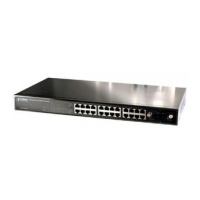
